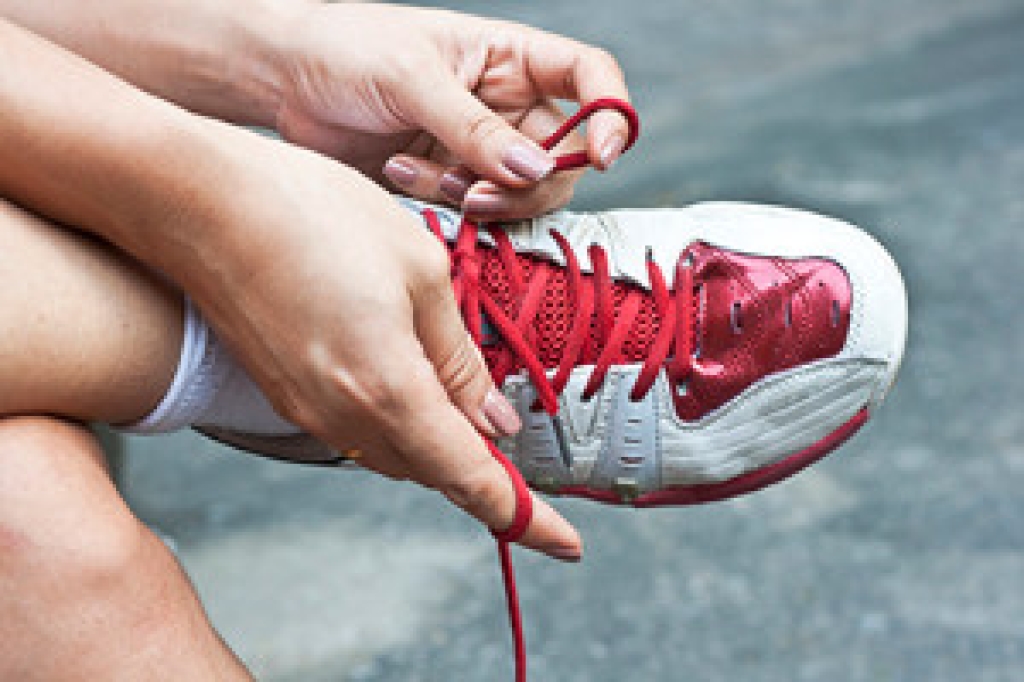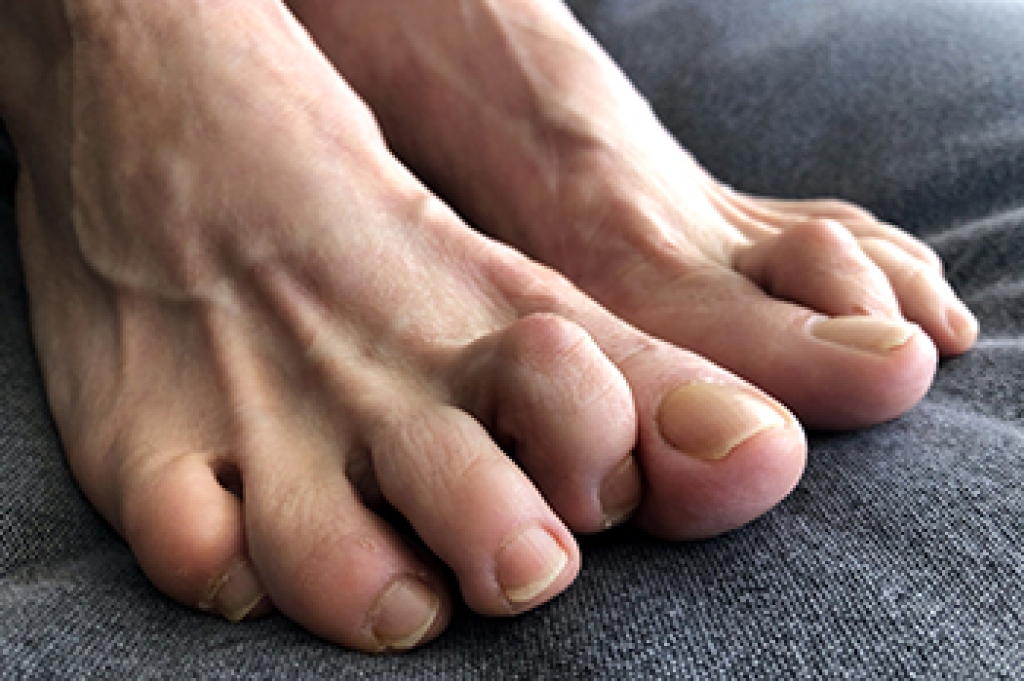Blog
How Bunions Can Affect Runners

Bunions can be particularly difficult for runners to deal with, as the big toe absorbs a great deal of force with every step taken. Luckily, there are a few measures that a runner with bunions can practice to reduce the effect of having this toe deformity. A bunion develops when the bottom of the big toe juts outward and the top of the big toe is pushed inward toward the other toes. This shift in bone structure then affects other parts of the foot and can lead to metatarsal pain in the ball of the foot, blisters, corns, and other painful foot or toe problems. Rest, orthotics, and ice are some ways to alleviate the pain of runners with bunions. But bunion surgery is often the last resort. Recovery time can be up to three months, and wearing protective boots or some type of cast is often recommended. A podiatrist can offer a realistic time frame for recovery from bunion surgery and recommend a plan for getting back to running. If your bunions are making running more and more painful, please consult a podiatrist for treatment options.
If you are suffering from bunion pain, contact one of our podiatrists of Carolina Foot & Ankle Specialists. Our doctors can provide the care you need to keep you pain-free and on your feet.
What Is a Bunion?
Bunions are painful bony bumps that usually develop on the inside of the foot at the joint of the big toe. As the deformity increases over time, it may become painful to walk and wear shoes. Women are more likely to exacerbate existing bunions since they often wear tight, narrow shoes that shift their toes together. Bunion pain can be relieved by wearing wider shoes with enough room for the toes.
Causes
- Genetics – some people inherit feet that are more prone to bunion development
- Inflammatory Conditions - rheumatoid arthritis and polio may cause bunion development
Symptoms
- Redness and inflammation
- Pain and tenderness
- Callus or corns on the bump
- Restricted motion in the big toe
In order to diagnose your bunion, your podiatrist may ask about your medical history, symptoms, and general health. Your doctor might also order an x-ray to take a closer look at your feet. Nonsurgical treatment options include orthotics, padding, icing, changes in footwear, and medication. If nonsurgical treatments don’t alleviate your bunion pain, surgery may be necessary.
If you have any questions, please feel free to contact our offices located in Mount Pleasant and Charleston, SC . We offer the newest diagnostic and treatment technologies for all your foot care needs.
Falling and the Feet

Falling can wreak havoc in an individual’s life. Their lifestyle may have to be altered, possibly to care for foot problems the fall may have caused. Falls are common among elderly people for various reasons. These can include failing eyesight, weakened muscles, and possible side effects from medication. Additionally, falling may happen from wearing shoes that do not fit correctly, and having tripping hazards in the household. The feet are often affected when a fall happens, which can range from incurring a broken toe to enduring an ankle sprain. There are simple fall prevention methods that can be implemented, which may help to reduce the risk of falling. These can consist of installing grab bars in the toilet and shower area, removing clutter in the living area, and improving existing lighting. If you would like more information about the importance of having fall prevention techniques, please consult with a podiatrist.
Preventing falls among the elderly is very important. If you are older and have fallen or fear that you are prone to falling, consult with one of our podiatrists from Carolina Foot & Ankle Specialists. Our doctors will assess your condition and provide you with quality advice and care.
Every 11 seconds, an elderly American is being treated in an emergency room for a fall related injury. Falls are the leading cause of head and hip injuries for those 65 and older. Due to decreases in strength, balance, senses, and lack of awareness, elderly persons are very susceptible to falling. Thankfully, there are a number of things older persons can do to prevent falls.
How to Prevent Falls
Some effective methods that older persons can do to prevent falls include:
- Enrolling in strength and balance exercise program to increase balance and strength
- Periodically having your sight and hearing checked
- Discuss any medications you have with a doctor to see if it increases the risk of falling
- Clearing the house of falling hazards and installing devices like grab bars and railings
- Utilizing a walker or cane
- Wearing shoes that provide good support and cushioning
- Talking to family members about falling and increasing awareness
Falling can be a traumatic and embarrassing experience for elderly persons; this can make them less willing to leave the house, and less willing to talk to someone about their fears of falling. Doing such things, however, will increase the likelihood of tripping or losing one’s balance. Knowing the causes of falling and how to prevent them is the best way to mitigate the risk of serious injury.
If you have any questions, please feel free to contact our offices located in Mount Pleasant and Charleston, SC . We offer the newest diagnostic and treatment technologies for all your foot care needs.
Are Your Shoes Correct for Your Running Style?

There are various forms of running and most require a specific type of running shoe to be worn. Running can range from training for a marathon to a new hobby. Studies suggest that it is beneficial to begin the process of purchasing running shoes by examining the wear patterns on existing shoes. A person who pronates normally will often notice wear and tear on the sole where the ball of the foot is. If there is excessive wear on the inside of the sole, the runner may have overpronation. Conversely, wear on the outside of the sole can indicate underpronation, and knowing these patterns can make it easier to choose running shoes that fit correctly. Additionally, it is beneficial to decide what surface you will be running on, such as trail, road, or treadmill running. Buying running shoes can be overwhelming, so it is suggested that you confer with a podiatrist who can provide additional information as well as their recommendation for you.
If you are a runner, wearing the right running shoe is essential. For more information, contact one of our podiatrists from Carolina Foot & Ankle Specialists. Our doctors can provide the care you need to keep you pain-free and on your feet.
Choosing the Right Running Shoe for Your Foot Type
To increase performance and avoid the risk of injury, it is important to choose the right running shoe based on your foot type. The general design of running shoes revolves around pronation, which is how the ankle rolls from outside to inside when the foot strikes the ground.
- Neutral runners are able to choose from a wide variety of shoes, including minimalist shoes or even going barefoot.
- Runners who overpronate, or experience an over-abundance of ankle rolling, should choose shoes that provide extra motion control and stability.
- Runners who underpronate, or supinate, have feet that have high arches and lack flexibility, preventing shock absorption. They require shoes with more flexibility and cushion.
If you have any questions, please feel free to contact our offices located in Mount Pleasant and Charleston, SC . We offer the newest diagnostic and treatment technologies for all your foot care needs.
Surgery May Be Necessary for Hammertoe Recovery

It’s easy to spot a person who has a hammertoe. It is a foot condition that is considered to be a deformity, and it is characterized by the middle toe that bends downward, forcing the joints up. It can be caused by various things, including wearing shoes that do not have ample room for the toes to move freely in or from medical conditions such as arthritis. This condition may also develop for genetic reasons, and surgery may be necessary so the toes can be permanently straightened. If the toes are severely bent, corns may develop where the joint touches the shoe, and this can cause additional discomfort. Specific types of shoes may need to be purchased to accommodate the deformed toes, and this may prompt patients to seek medical advice. If you are afflicted with hammertoe, it is strongly urged that you contact a podiatrist who can help you to remedy this condition.
Hammertoes can be a painful condition to live with. For more information, contact one of our podiatrists of Carolina Foot & Ankle Specialists. Our doctors will answer any of your foot- and ankle-related questions.
Hammertoe
Hammertoe is a foot deformity that occurs due to an imbalance in the muscles, tendons, or ligaments that normally hold the toe straight. It can be caused by the type of shoes you wear, your foot structure, trauma, and certain disease processes.
Symptoms
- Painful and/or difficult toe movement
- Swelling
- Joint stiffness
- Calluses/Corns
- Physical deformity
Risk Factors
- Age – The risk of hammertoe increases with age
- Sex – Women are more likely to have hammertoe compared to men
- Toe Length – You are more likely to develop hammertoe if your second toe is longer than your big toe
- Certain Diseases – Arthritis and diabetes may make you more likely to develop hammertoe
Treatment
If you have hammertoe, you should change into a more comfortable shoe that provides enough room for your toes. Exercises such as picking up marbles may strengthen and stretch your toe muscles. Nevertheless, it is important to seek assistance from a podiatrist in order to determine the severity of your hammertoe and see which treatment option will work best for you.
If you have any questions, please feel free to contact our offices located in Mount Pleasant and Charleston, SC . We offer the newest diagnostic and treatment technologies for all your foot care needs.



